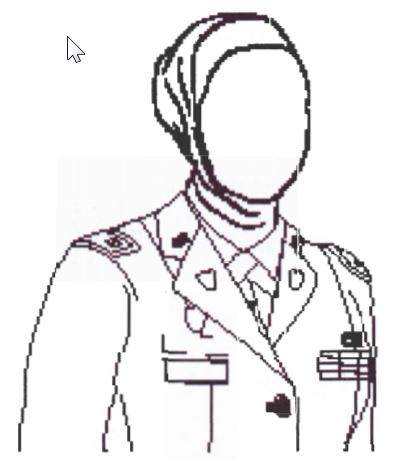Zarvan
ELITE MEMBER

- Joined
- Apr 28, 2011
- Messages
- 54,470
- Reaction score
- 87
- Country
- Location
Observant Sikhs and conservative Muslim women are now able to wear religious head coverings, thanks to a directive issued Tuesday that updates the Army's grooming and appearance regulation.
Sikh soldiers also are allowed to maintain their beards, according to the update.
Soldiers will still have to submit their requests for brigade-level approval, but the move opens up service to people who otherwise would have had to abandon cherished religious practices to serve.
Since 2009, religious accommodation requests received by the Army have largely been from soldiers wanting to wear a hijab or a Sikh turban or patka with uncut beard and hair, according to the directive.
"Based on the successful examples of soldiers currently serving with these accommodations," Army Secretary Eric Fanning wrote in the directive, he decided to move forward with those accommodations as long as the colors match the uniform of the day.
"The Army has reviewed its policies to ensure we allow every opportunity for qualified soldiers to serve, regardless of their faith background," Lt. Col. Randy Taylor, an Army spokesman, said in a statement. "We believe in preserving the First Amendment right of free exercise of religion for those who want to serve in the U.S. Army."
But when training or deployment calls for it, soldiers will still be required to wear combat helmets or other protective gear.
“While we still seek a permanent policy change that enables all religious minorities to freely serve without exception, we are pleased with the progress that this new policy represents for religious tolerance and diversity by our nation's largest employer,” said Harsimran Kaur, legal director for the Sikh Coalition, in a press release from Becket Law, a firm that represents several Sikh soldiers.
Kaur is co-counsel for Capt. Simratpal Singh, whose 2016 lawsuit against the Defense Department lit on fire the discussion of religious accommodations to uniform policy.

Army Times
Sikh Army captain sues DoD to keep beard, turban
Previously, Sikhs had been able to wear beards and turbans in the Army, up until a 1980s ban.
"Sikhs have a history of heroic service in militaries around the world — including in the U.S. until about thirty years ago," Eric Baxter, senior counsel at Becket Law, said in the release. "Now their strength will be added back to the Army without the threat of forced shaves and haircuts.”
Staying in regs
Though Fanning's decision opens up the option for hijabs, turbans and beards, soldiers will have to submit requests with an explanation of their sincerely held religious beliefs to their brigade commanders for approval.
If the commander, or a designated O-6, denies the request, they must send it to the G-1, who will send it on to the Army secretary for final approval.
Hijabs must be worn underneath patrol caps or berets, for example, and made out of a "subdued" material -- nothing shiny -- that matches uniforms, which could include black, brown, green, tan or navy.

An example of authorized hijab wear with the Army Service Uniform (Source: Army Direction 2017-13)
"The material will be free of designs or markings, except that a Soldier wearing the Army Combat Uniform may wear a hijab in a camouflage pattern matching the uniform," according to the directive.
The scarf also has to be worn close to the hair and jaw lines, so not covering any part of the face, and the ends have to be tucked into the uniform top.
Beards must be under 2 inches, measured from the bottom of the chin. Grooming products are allowed to keep them neat, but nothing petroleum-based is allowed if a protective mask needs to be worn.

Examples of authorized wear for the patka (under-turban) or turban (Source: Army Direction 2017-03).
Turbans, as well as under-turban head coverings called patkas, have to follow the same color guidelines as the hijab. There are no bun size restrictions for turbans, but hair has to be completely covered.
And soldiers assigned to Ranger, Special Forces or airborne units will be able to wear tan, green or maroon turbans to match the berets.
Sikh or Muslim soldiers who were previously granted exemptions will receive new accommodation memoranda by Jan. 10, according to the directive.
The directive also calls on the assistant secretary of the Army for acquisition, logistics and technology to test existing equipment as well as alternative gear that can provide better protection for soldiers with beards.
"Study results show that beard growth consistently degrades the protection factor provided by the protective masks currently in the Army inventory to an unacceptable degree," the directive states. "Although the addition of a powered air-purifying respirator and/or protective mask with a loose-fitting face piece has demonstrated potential to provide adequate protection for bearded individuals operating in hazardous environments, further research, development, testing and evaluation are necessary to identify masks that are capable of operational use and can be adequately maintained in field conditions."
Until then, soldiers with a religious accommodation allowing a beard may not attend schools requiring toxic chemical agent training, nor can they be assigned to positions requiring compliance with biological, chemical or nuclear surety requirements as outlined in Army regulations. This means bearded soldiers may not serve as CBRN officers or specialists.
A beard accommodation also may be temporarily suspended when a specific or concrete threat of exposure to toxic CBRN agents requires all soldiers to be clean-shaven, including those with medical profiles, according to the directive.
In addition to these changes, the directive from Fanning also allows female soldiers to wear dreadlocks or locks in accordance with existing grooming standards for braids, cornrows and twists.
Soldiers also can wear religious bracelets, similar in style to medical alert, missing in action, prisoner of war, or killed in action identification bracelets, while in uniform or in civilian clothes on duty.
https://www.armytimes.com/articles/...l&utm_source=facebook.com&utm_campaign=buffer




 Kudus to
Kudus to 




